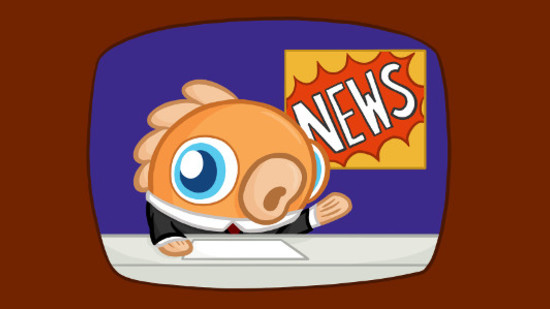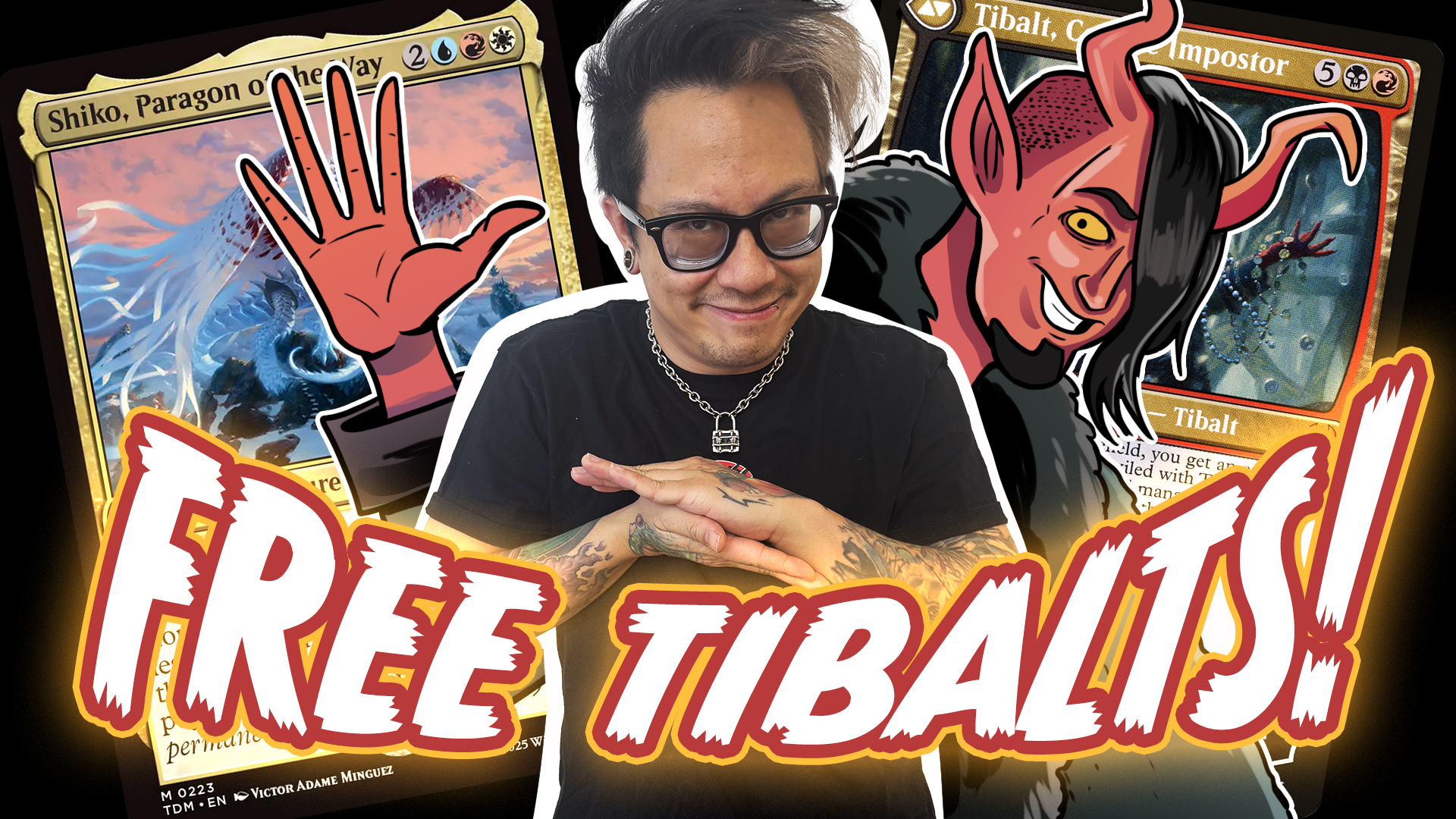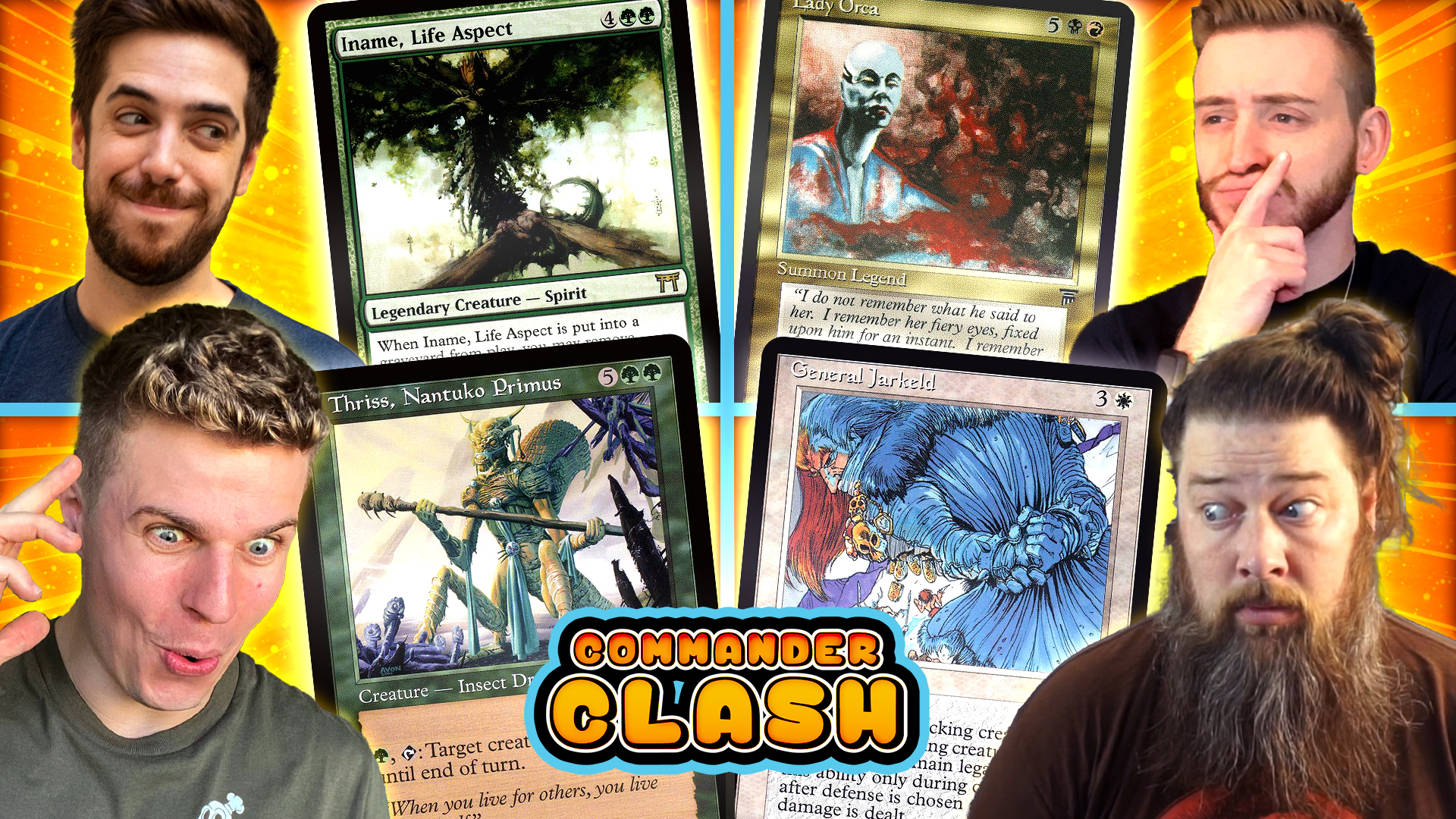The "Face-walker" Problem
While Magic has undergone many changes over the course of its nearly 25-year life and will doubtlessly undergo many more in the coming years, by far the biggest change in the past decade—bigger than New World Order (which probably doesn't mean what you think it means), the introduction of mythics, the changes to the legend rule, or the elimination of core sets—was the birth of planeswalkers.
Let's face it: planeswalkers are (or at least, were) exciting. They are currently the face cards of every Magic set. The story line of the Gatewatch has been driving the narrative of the game for nearly two years now, and Magic's next block—Amonkhet—is focused on Nicol Bolas, who will almost assuredly be in planeswalker form. Of course, this isn't necessarily a bad thing. While planeswalker fatigue is a concern, and even more so now with the same small group of planeswalkers showing up in just about every set (based on the art spoiled for Amonkhet, it looks like we may have three different versions of Nissa legal in the same Standard format, which would be a record), there are some big advantages of planeswalkers, especially from Wizards' perspective.
In the modern narrative- and brand-driven age of Magic, planeswalkers are essential for story purposes. In a very real sense, Wizards is looking to turn Magic into a superhero movie (or should we say, super-friends movie?). We get to follow the exploits of the Jace-tice League around the multiverse, fighting various baddies, hanging out, making new friends, getting in squabbles, and (I'm afraid) before long, falling in and out of love and probably eventually ending up on some MTG version of Jerry Springer. Kidding aside, having consistent characters is helpful when part of the goal is telling a story across years, sets, and blocks, since players (and readers and moviegoers) already have a connection and familiarity with the characters.
As I mentioned before, the risk is that people end up getting tired of the same old faces over and over again, and while we've heard some rumblings about this happening with the Gatewatch gang, we aren't really to that point yet. However, at least for today, I'm not primarily concerned with the story aspect of planeswalkers. While understanding the importance of planeswalkers to Wizards—an importance rooted in story and branding—lays the foundation for what we'll be talking about today, our main topic is the impact of planeswalkers on gameplay. The lore aspect is secondary. While I'm personally not a huge fan of the never-ending Gatewatch story line, that's just me, and I know lots of other people who love it. On the other hand, planeswalkers, and the proliferation of powerful planeswalkers in recent sets, are one of the primary reasons that gameplay is suffering, especially in Standard.
Planeswalkers as Set-Selling Face Cards (aka Face-walkers)


When it comes to selling a Magic set, Wizards' technique is to use a few powerful cards as "face cards" to move the booster boxes off the shelves. This isn't a bad thing, and it actually makes a lot of sense. In Khans of Tarkir, you could argue that the fetch lands were the face cards; in Magic 2010, it was Baneslayer Angel, and so on and so forth. However, in the past couple years, we've seen a sort of perfect storm of influences push Wizards toward making planeswalkers the face cards of just about every set (the big exception was Eldritch Moon, where Emrakul, the Promised End was the face card).



Here's the basic progression: Hasbro wants Magic to become Transformers or the X-Men or some other "franchise." To make this work, Magic needs a consistent set of characters. The obvious choice is planeswalkers. As such, the Magic story has become primarily focused on planeswalkers (see: the Gatewatch). However, to make this plan work, the planeswalkers need to be two things. First, they need to be the selling point and primary focus of the set (there's a reason you don't see X-Men movies focused on Broo). Second, they need to be really good—at the very least, good enough that they will show up in Standard so players at FNM or people watching coverage will see them. If they happen to be very good in Standard and people see them all the time, even better.



Take a look back at the sets currently in Standard. In Battle for Zendikar, the face-walker was Gideon, Ally of Zendikar, perhaps the most powerful card in Standard and currently among the top 10 most played cards in the format. In Oath of the Gatewatch, it was Nissa, Voice of Zendikar, who is sort of on the downswing at the moment but spent the better part of last year as one of the best cards in one of the best decks (GW Tokens) in Standard. In Shadows over Innistrad, it was Liliana, the Last Hope, who helped get Emrakul, the Promised End banned as an integral part of the GB Delirium deck. Eldritch Moon was the outlier (with Emrakul, the Promised End selling the set; however, this didn't end well either). Then in Kaladesh, we had Chandra, Torch of Defiance (currently a top 10 card in Standard) and Saheeli Rai (not truly the face-walker but, through a weird stroke of incompetence or dumb luck, also among the top 10 cards in the format). Finally, in Aether Revolt, it was Tezzeret the Schemer.
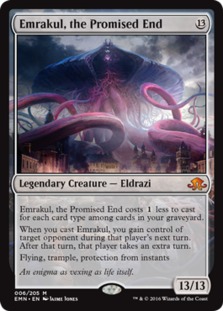
This list of face-walkers reads like a who's-who list of the best cards in Standard. Some are so good that they have been banned (Emrakul, the Promised End), at least two were on the short list for the last banned-and-restricted announcement (Gideon, Ally of Zendikar and Saheeli Rai), and the rest (discounting Tezzeret the Schemer) have all been top-five cards in Standard at various points in their existence. The point is, Wizards is not only using planeswalkers to sell just about every set but also pushing these cards to the max to make sure they are somewhere between very good and broken in Standard.
Face-walkers and Gameplay
While having these ultra-pushed planeswalkers is arguably a good thing for pushing forward the Magic story and perhaps for selling sets, it's proving to be extremely problematic for gameplay for a few reasons. To really understand why, first we need to look at what planeswalkers really are, in terms of Magic gameplay. Behind all the flavor and story, planeswalkers are sort of this weird hybrid of split cards and permanents (similar to an artifact or enchantment) that can be activated repeatedly. As a result, their very nature and design make them into card-advantage generating engines, even if they don't technically draw you cards, because their abilities can be used every single turn. The split card aspect comes from their multiple abilities, with many of the powerful planeswalkers we've seen over the past couple of years being great on defense (Gideon, Ally of Zendikar's ability to make a 2/2 token for chump blocking every turn) but also being great on offense (Gideon, Ally of Zendikar's ability to be a 5/5 indestructible attacker for only four mana), allowing a deck to stabilize, survive, and then finish the game. Because of this, many planeswalkers fall into the rare group of Magic cards that are the best thing you can draw when you are behind and also the best thing you can draw when you are ahead and looking to close out the game.


Perhaps the most obvious problem with planeswalkers is that they greatly reduce the number of cards that are playable in the format because they are just so much better than everything else. Take, for example, Chandra, Torch of Defiance. At her very worst, she says, "four mana, deal four damage to a creature and gain a bit of life." This is the absolute floor. Meanwhile, her ceiling (as with just about all planeswalkers) is "you win the game" (in Chandra, Torch of Defiance's case, this comes from the +1 to deal damage and draw cards, perhaps followed by the ultimate to speed up the process). Meanwhile, Collective Defiance is a really, really powerful Magic card, not only dealing four damage to a creature but, if you can spend more mana, hitting your opponent as well and maybe even Windfalling away some bad cards from your hand. The problem is that nobody can play Collective Defiance because it's just generally worse than Chandra, Torch of Defiance. Basically, if you are playing Collective Defiance, you are doing it wrong, because Chandra, Torch of Defiance is just so off-the-charts powerful. This trend continues to other planeswalkers as well. If you want an above-the-curve beater and are playing white, you can't play Gisela, the Broken Blade or even Archangel Avacyn; you have to play Gideon, Ally of Zendikar. In short, due to their natural power, planeswalkers tend to push other cards out of the format, and this problem is doubled when planeswalkers are intentionally being pushed to see Standard play for non-gameplay purposes.


Apart from decreasing diversity, planeswalkers have another major impact on the game: they tend to push everything to the middle of the curve. When it comes to building competitive decks in Standard, it's a really hard sell for players to leave the most powerful cards in Standard on the sidelines. As such, rather than aggro / midrange / control, we end up with aggressive midrange (featuring Gideon, Ally of Zendikar), true midrange (featuring Gideon, Ally of Zendikar), and controlling midrange (also featuring Gideon, Ally of Zendikar), which is something Brian Demars touched on in an article on ChannelFireball a few days ago.

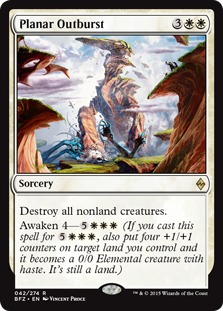

Planeswalkers aren't the only reason for the shift to the midrange-on-midrange-on-midrange metagame that has become common over the past few Standards. Shifting up the costs on wraths, burn spells, and removal has contributed as well, and ironically, these other changes actually make the planeswalker problem worse. In a Standard format with Lightning Bolt, Chandra, Torch of Defiance wouldn't automatically be the best removal spell, and it may be possible and even correct to build a red deck without the planeswalker.
Finally, while this isn't a concern for everyone, having extremely pushed, must-play planeswalkers every set makes Standard more expensive for people looking to compete on a budget. If you follow the Budget Magic series, you'll know that I try to post an upgraded list every week of whatever budget deck we played. Perhaps unsurprising, by far the most common "upgrade" to Standard decks is adding planeswalkers like Gideon, Ally of Zendikar. Most of the time, it's not because Gideon, Ally of Zendikar is on theme or synergistic but simply because it is so powerful that if you are playing a white deck without it, the deck is almost always less powerful than it could be.
In the past, Wizards has talked about how the mythic rarity isn't for pushing constructed cards or simply a list of the best cards in the set. Well, with the new trend of pushing planeswalkers for story and sales, this is at least one mythic slot each set that is dedicated to a card that will be a "must have" to compete in constructed, and some sets have multiple pushed planeswalkers. The end result is more mythic slots being dedicated to constructed staples, which means more extremely expensive cards (in a world of Masterpiece cards, mythics are the only cards from the set proper that can maintain significant value while in print), which in turn means it is hard for players to compete in Standard without spending a lot of money for a handful of mythics.
To be fair, I wanted to write about the positive impacts of planeswalkers on gameplay, but I'm struggling to come up with good answers. While planeswalkers can certainly be fun, the fun planeswalkers aren't the face-walkers that are obviously pushed for constructed. Out of all the adjectives that could be used to describe Gideon, Ally of Zendikar, "fun" isn't on the list. Actually, slightly less powerful planeswalkers are much more fun, not just in gameplay, where they are actually beatable and occasionally do interesting things, but in deck building as well, where there's actually some choice and tension over whether you should put a Venser, the Sojourner or Liliana Vess in your deck. Having games come down to "who draws their Saheeli Rai first" isn't fun. Having games decided by, "Do I have one of a very small number of answers to kill my opponent's Gideon, Ally of Zendikar?" isn't fun. The point is that planeswalkers can be fun, but extremely powerful planeswalkers are almost never fun, and lately (for the reasons we've discussed), we've been getting more and more extremely powerful planeswalkers.
The Solutions
First off, in looking for solutions to the planeswalker problem, we should probably work under the assumption that some options are simply off the table. For example, getting rid of the "face-walkers" as selling points and pushed cards would solve the problem, but it seems unlikely that Wizards would even entertain the idea. For better or worse, it has a plan to turn Magic into a branded franchise like X-Men or Transformers, and having planeswalkers as the most important cards in most sets is essential to this plan. Wizards simply isn't going to walk back its overarching goal to make planeswalkers less problematic to gameplay. Also, this isn't about any specific planeswalker. Making Gideon, Ally of Zendikar a bit less good doesn't really solve anything because the parade of face-walkers will continue for the foreseeable future, based on all the information we have. So, "fixing" any individual planeswalker doesn't solve the underlying problem of Wizards' need to push planeswalkers for marketing and set-selling.
Another non-starter is moving planeswalkers from mythic to rare, and while this would help keep prices in check (which would be a good thing), this wouldn't really solve any of the gameplay issues associated with planeswalkers (a Gideon, Ally of Zendikar at rare is just as powerful and unfun as a Gideon, Ally of Zendikar at mythic). However, there are some possible solutions.
#1: Make Planeswalkers Slightly Less Good



Oh yeah, I forgot to mention in the last section: making planeswalkers bad is also not a realistic solution because planeswalkers need to see play to achieve the marketing and branding goals. However, I believe there is a tipping point where making planeswalkers too good actually damages Wizards' story / marketing goals more than it helps. Having people see face-walkers at FNM and on Grand Prix / SCG coverage is a great thing for Wizards. On the other hand, seeing them so much that players hate them (or tune out coverage / stop going to FNM all together) is a bad thing. As such, it may be that Wizards is simply aiming too high when it comes to planeswalker development. Rather than shooting for "clearly without-a-doubt Standard staple" and then ending up with oppressive, diversity-reducing monstrosities, maybe the target is "playable in Standard," and then when a card is a bit too good, it's a Standard staple rather than broken. Basically, Wizards needs to once again come to accept the fact that planeswalkers—even face-walkers—don't have to be brokenly good for the cards to achieve their story development and set-selling goals.
#2: Evergreen Planeswalker Hate
I feel like I write about bringing answers back to Standard a lot—maybe even too much, especially considering that Wizards has stated that it realizes the pendulum has swung too far toward threats and intends on swinging it back. However, this is a little bit different. Instead of the general "threats are too powerful and answers are too weak" argument, this is a plea for specific answers to be in every Standard format. Assuming that Wizards isn't especially interested in changing the planeswalker-centric story or significantly powering down planeswalkers, the easiest solution to the planeswalker problem is just making sure that every Standard has cards that can deal with Magic's most powerful card type.


In our current Standard, the planeswalker problem is even worse than normal because the answers to planeswalkers are historically bad. Burn spells start as two mana (and sorcery speed) for only three damage, and Ruinous Path is also a sorcery. Part of the solution can be to bring back better burn spells (which are a fine way for red to interact with planeswalkers) and Hero's Downfall (the best black answer), but with planeswalkers being such a hugely important part of the game at present, having a couple of color-specific answers isn't good enough (for example, having Hero's Downfall in the format would push players to needing to play black to have a way of killing Gideon, Ally of Zendikar, which again has a constricting effect on the format as a whole).

What we really need is a good, colorless answer to planeswalkers that Wizards can make sure is in every Standard format (the "how" of keeping the card in Standard is a bit complicated with the removal of core sets, but it is possible—see Negate). Personally, I'd be on board with every Standard having Pithing Needle, but I could imagine there would be times when Wizards would want to avoid this effect (to support certain set mechanics). So, how about a Pithing Needle that only names planeswalkers? Literally the same text, but instead of "name a card," just "name a planeswalker."
There's also lots of unexplored design space when it comes to planeswalkers, and this needs to change. If Wizards is going to continue pushing planeswalkers as the most important card type in the game, it also needs to be more willing to add "planeswalker" as a target on cards like Thopter Arrest and Stasis Snare, and perhaps start printing more planeswalker wraths. Or, what about a black enchantment that is efficiently costed and says something like, "If a player would add loyalty counters to a planeswalker, remove that many loyalty counters instead"? Basically, we've seen the "good" of planeswalkers and we know all too well their epic power, but we need to see the "bad" as well. Every other card type in Magic has interesting and ample answers, and planeswalkers should be no different.
#3: Reduce the Number of Planeswalkers
Battle for Zendikar not only marked a major change in MTG lore, with the story focused almost exclusively on planeswalkers, but it also marks the start of a massive increase in the number of planeswalkers seeing print. From Shards of Alara through the end of Khans block, the average big set contained 2.45 planeswalkers, and this number drops to 2.3 if we discard Shards of Alara itself as an outlier (it had four planeswalkers, for some reason). Meanwhile, the average small set during this time frame contained less than one planeswalker (every small set had exactly one, except for Alara Reborn, which didn't have any). Since Battle for Zendikar, the average big set has had an average of four planeswalkers and the average small set has had an average of two planeswalkers. This represents a massive increase, with nearly twice as many planeswalkers being printed each set, and this is not including the Planeswalker Deck planeswalkers, which technically increase these numbers even more.
When you combine the number of planeswalkers with the need Wizards feels to push planeswalkers, it's not surprising that Standard has developed into midrange slug-fests. Rather than having a deck or two supported by planeswalkers, most decks feel it necessary to play the card type. As a result, this leads to a lot of games that feel the same, often devolving into who draws their trump planeswalker first or who can protect their planeswalker better.



Plus, having so many planeswalkers reduces how special these characters and cards actually are in the game of Magic. It was incredibly exciting when planeswalkers first came out, and the planeswalker honeymoon lasted for several years. Now, the card type has lost a lot of its luster, simply because there are some many planeswalkers being printed each year. Even super-pushed planeswalkers like Gideon, Ally of Zendikar aren't really exciting, at least not in the same way that Jace Beleren or Garruk Wildspeaker were exciting back in Lorwyn.
Ideally, Wizards would cut the number of planeswalkers being printed back to pre-Battle for Zendikar levels (two in a large set, one in a small set). This would help keep Standard from being dominated by the card type and perhaps eventually make the card type exciting again.
#4: Make Narrower Planeswalkers



This might be the solution that actually has the best chance of being implemented (although a mixture of all of these solutions would be a good thing for Standard). We've talked about how Wizards needs to print powerful planeswalkers for non-gameplay purposes, and while this might sound contradictory, having powerful planeswalkers isn't necessarily a bad thing. The problem with many of the most recent face-walkers is they are powerful in just about any deck that can cast them. Cards like Nissa, Voice of Zendikar, Gideon, Ally of Zendikar, and Chandra, Torch of Defiance can legitimately be argued as among the best cards in an aggro deck, a midrange deck, and a control deck in their colors. This broad power makes sure that planeswalkers see play but also leads to a lot of the problems we've been talking about, where it's simply wrong to play any other card over a planeswalker.



On the other hand, we've seen some really good examples of planeswalkers that are extremely powerful but really only work in a specific archetype. Tezzeret, Agent of Bolas might be the best example. Just reading over the card, it jumps off the page as powerful and pushed. However, to really harness its power, you need to be playing a specific deck featuring a lot of artifacts. Saheeli Rai was similar, at least before Felidar Guardian. While most decks wouldn't want it, there were specific synergies (like Sun Titan) that made Saheeli Rai a very good card. The same is true of planeswalkers like Venser, the Sojourner (blink), Garruk Wildspeaker (ramp), Ajani, Caller of the Pride (aggro), and Ashiok, Nightmare Weaver (control). All of these planeswalkers, and several others I didn't mention, can be 8 out of 10 in terms of power but only in specific archetypes. As such, these planeswalkers don't feel oppressive, they don't warp Standard, and they are actually fun to play with and even against, which is a good thing for all of us players. Plus, with enough power, they will still meet Wizards' criteria of being Standard playable.
Conclusion
For better or worse, planeswalkers are here to stay. If anything, we should expect planeswalkers to become even more important over the next few years, since Wizards believes that they are the best way to move Magic from being a game to a franchise brand. While some old-timers (and even myself at times) might bemoan this change, it does make sense from Wizards' perspective and very well may be the best way to achieve Wizards' non-gameplay goals.
As such, it's essential that Wizards gets planeswalkers right. While we've talked about why this is important to us players, it's also important to Wizards. Having a large portion of the audience end up disliking its most important characters works opposite its goal. Thankfully, there is a middle ground. It is possible for Wizards to print powerful planeswalkers to sell sets and make movies without destroying Standard and the actual game (which, remember, is the foundation of the brand. Without Magic being fun and playable, there will be no movies, T-shirts, stories, or anything else because no one will care). It's as simple as cutting back the total number of planeswalkers to prevent fatigue, making more ways to interact with the card type (and making sure these answers are in every Standard format), and moving planeswalkers from being broadly powerful cards that are only option for any deck in their colors to becoming more narrowly powerful designs that are still extremely strong, but only in specific decks.
Anyway, that's all for today. What do you think? Do you like planeswalkers? Are they still an exciting card type, or have you experienced planeswalker fatigue? What do you think about the number of planeswalkers? How about their power level? If you agree that there is a planeswalker problem, what other ways are there to fix it that not only achieves the goal of us players but those of Wizards as well? (Remember that getting rid of planeswalkers, printing planeswalkers at rare / uncommon, and changing the storyline to devalue planeswalkers are all very likely non-starters from Wizards' perspective, and for our voices to be taken seriously, we need to consider their goals as well when we give our feedback and criticism.) Let me know in the comments, and as always, you can reach me on Twitter @SaffronOlive or at SaffronOlive@MTGGoldfish.com.


